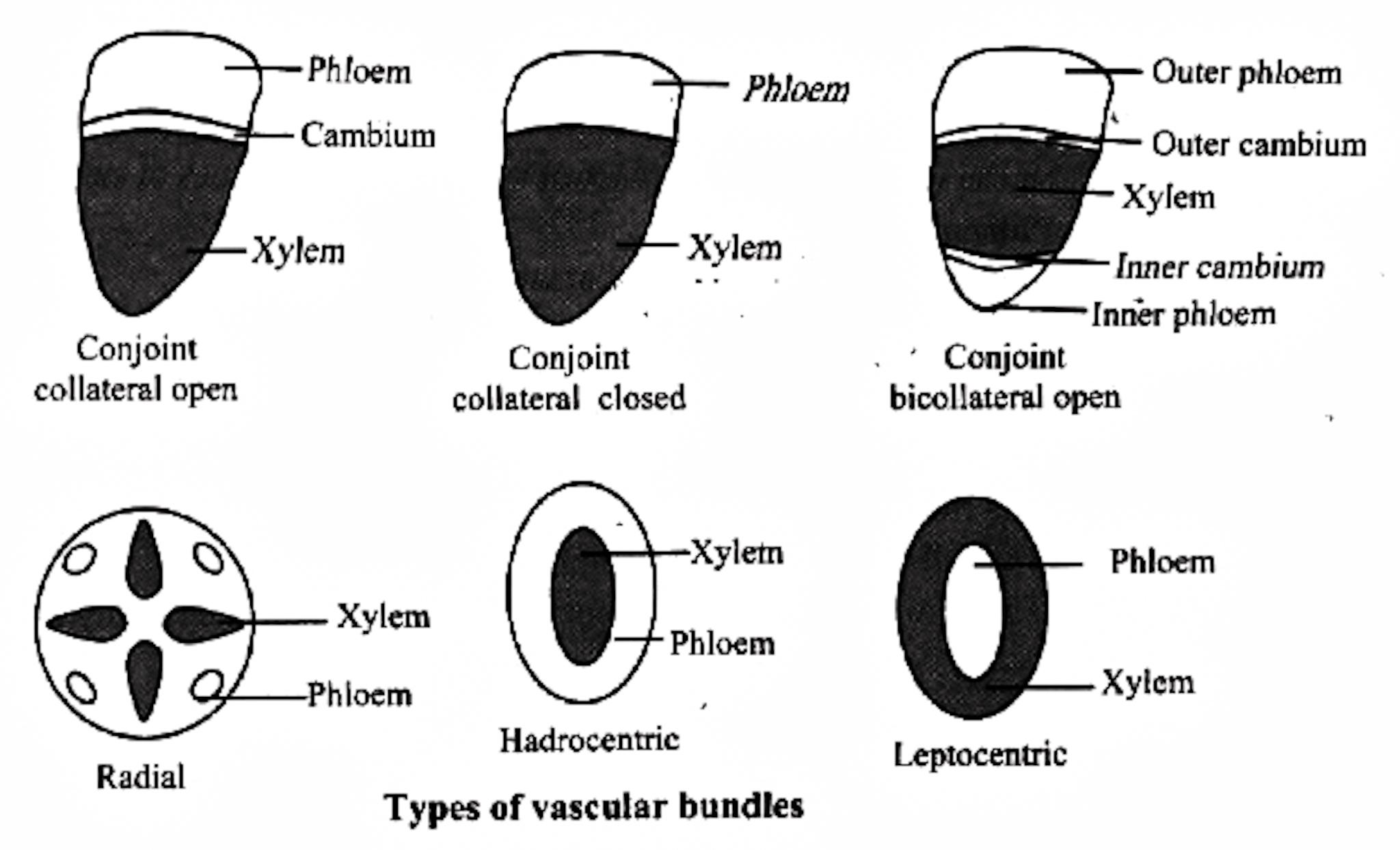
Radial vascular bundles occur in
A. Stem
B. Monocot root
C. Dicot root
D. Both monocot and dicot roots
Answer
598.8k+ views
Hint: The arrangement of conducting vessels in the stem or leaves of a plant.
Complete answer:
The radial vascular bundle is a simple arrangement of the xylem and phloem side by side on different radii and are separated by non-conductive tissues.
These radial vascular bundles are the characteristic feature of the root of both dicots and monocots.
Additional information:
- The radial vascular bundle is the presence of xylem and phloem in patches.
- Several vascular bundles vary from 2-6 in dicot root, whereas numerous vascular bundles are present in monocot roots.
- Vascular bundles are mainly of four types:
1. Collateral bundle – a vascular bundle where the strand of phloem is present external to the strand of xylem in the same radius. It is two types: closed collateral bundle and open collateral bundle.
2. Bicollateral bundle – a vascular bundle where phloem is situated on the periphery and inner side of xylem.
3. Concentric bundle – a vascular bundle in which one type of vascular bundle surrounds the other. It is of two types: amphivasal bundle and amphicribral bundle.
4. Radial vascular bundle – a vascular bundle in which primary xylem and phloem strands are separated by non-vascular tissues.
- They are part of the transport system in vascular plants.
So, the correct answer is Both monocot and dicot roots.

Note: The vascular bundle is arranged in a ring, with the pit concentrated at the core of the stem, rather than being scattered throughout the plant interior. In each vascular bundle, the xylem and phloem are separated by a substance called vascular cambium.
Complete answer:
The radial vascular bundle is a simple arrangement of the xylem and phloem side by side on different radii and are separated by non-conductive tissues.
These radial vascular bundles are the characteristic feature of the root of both dicots and monocots.
Additional information:
- The radial vascular bundle is the presence of xylem and phloem in patches.
- Several vascular bundles vary from 2-6 in dicot root, whereas numerous vascular bundles are present in monocot roots.
- Vascular bundles are mainly of four types:
1. Collateral bundle – a vascular bundle where the strand of phloem is present external to the strand of xylem in the same radius. It is two types: closed collateral bundle and open collateral bundle.
2. Bicollateral bundle – a vascular bundle where phloem is situated on the periphery and inner side of xylem.
3. Concentric bundle – a vascular bundle in which one type of vascular bundle surrounds the other. It is of two types: amphivasal bundle and amphicribral bundle.
4. Radial vascular bundle – a vascular bundle in which primary xylem and phloem strands are separated by non-vascular tissues.
- They are part of the transport system in vascular plants.
So, the correct answer is Both monocot and dicot roots.

Note: The vascular bundle is arranged in a ring, with the pit concentrated at the core of the stem, rather than being scattered throughout the plant interior. In each vascular bundle, the xylem and phloem are separated by a substance called vascular cambium.
Recently Updated Pages
The number of solutions in x in 02pi for which sqrt class 12 maths CBSE

Write any two methods of preparation of phenol Give class 12 chemistry CBSE

Differentiate between action potential and resting class 12 biology CBSE

Two plane mirrors arranged at right angles to each class 12 physics CBSE

Which of the following molecules is are chiral A I class 12 chemistry CBSE

Name different types of neurons and give one function class 12 biology CBSE

Trending doubts
One Metric ton is equal to kg A 10000 B 1000 C 100 class 11 physics CBSE

What is 1s 2s 2p 3s 3p class 11 chemistry CBSE

Discuss the various forms of bacteria class 11 biology CBSE

State the laws of reflection of light

Explain zero factorial class 11 maths CBSE

An example of chemosynthetic bacteria is A E coli B class 11 biology CBSE




